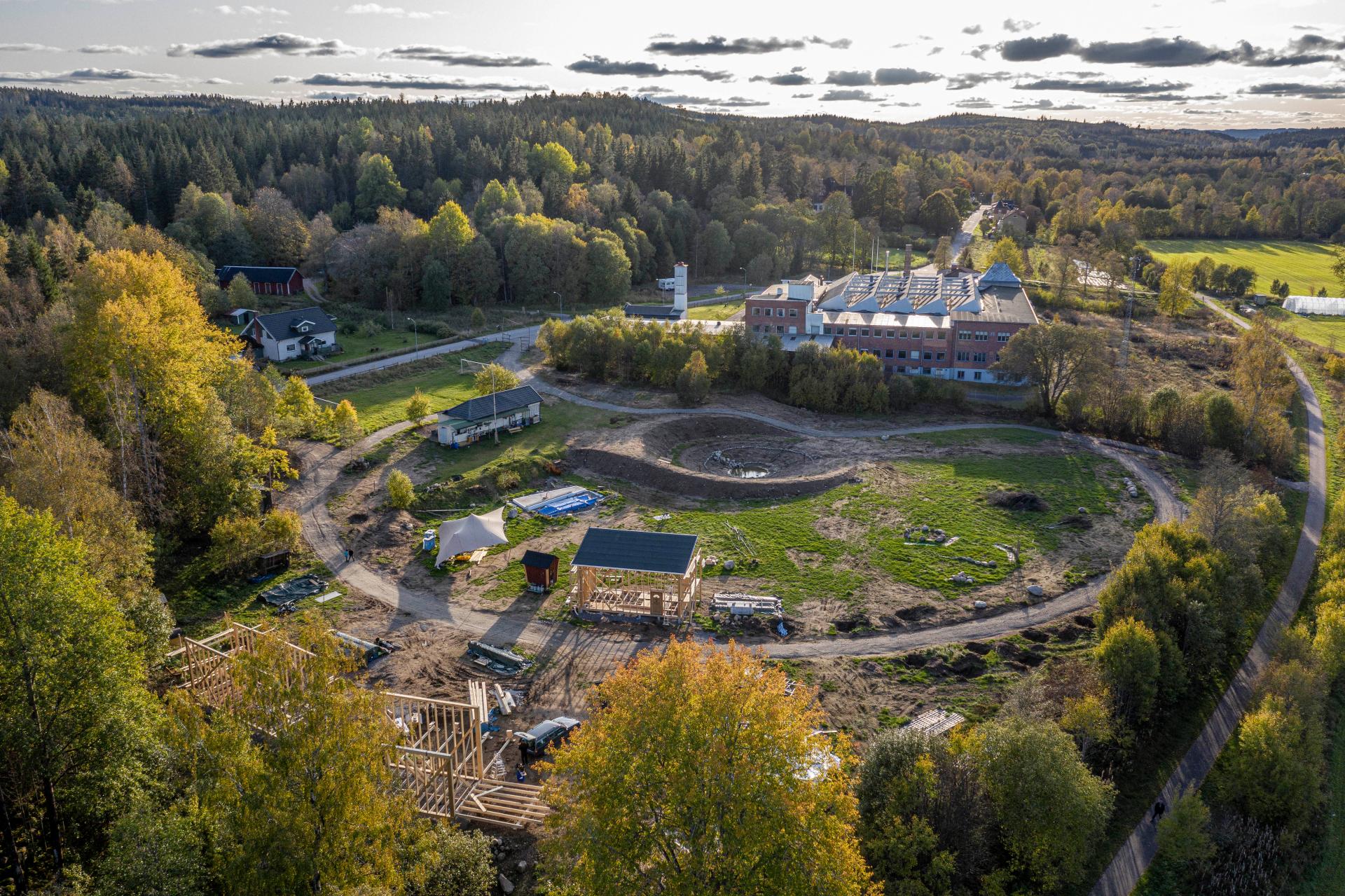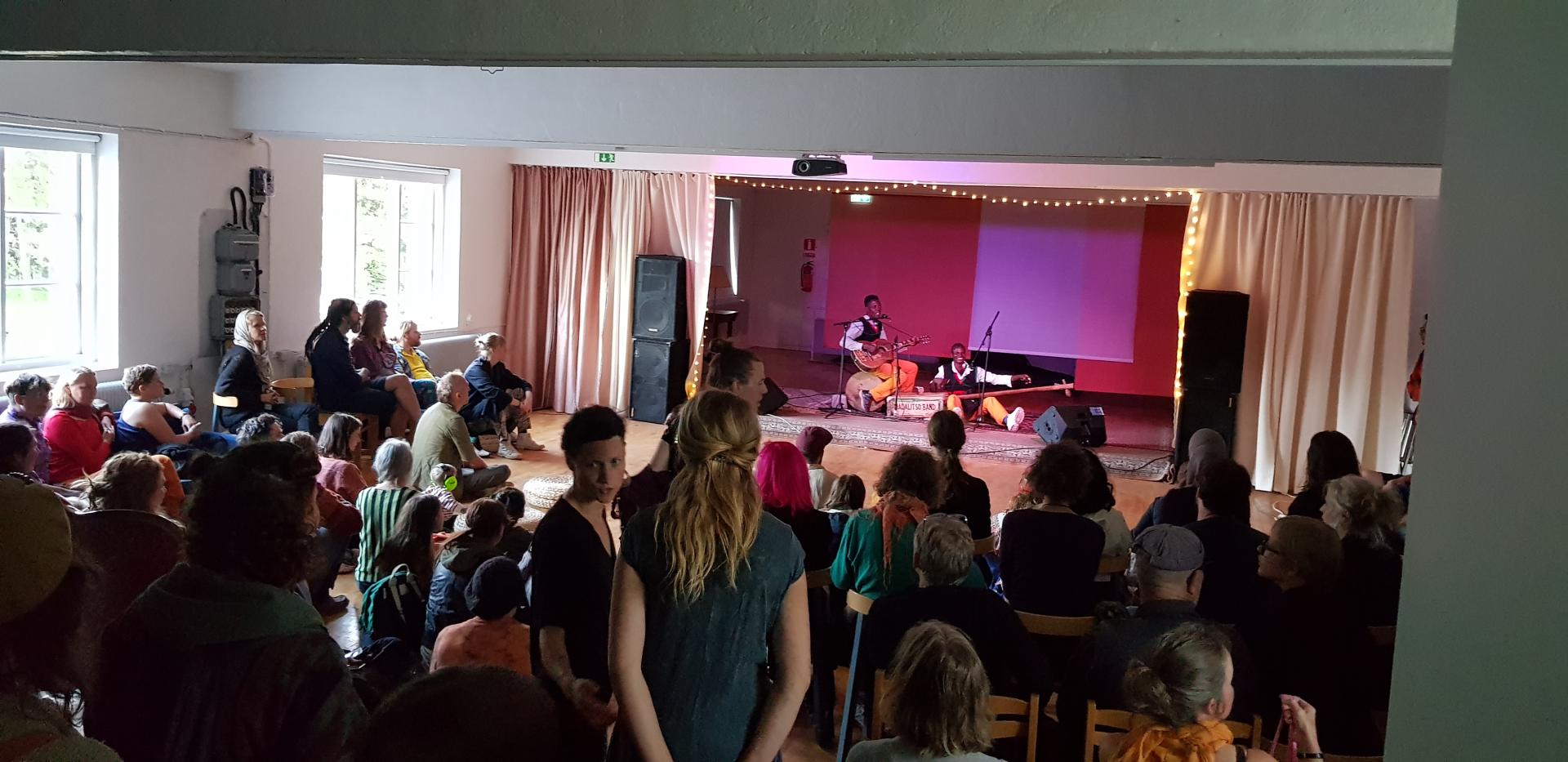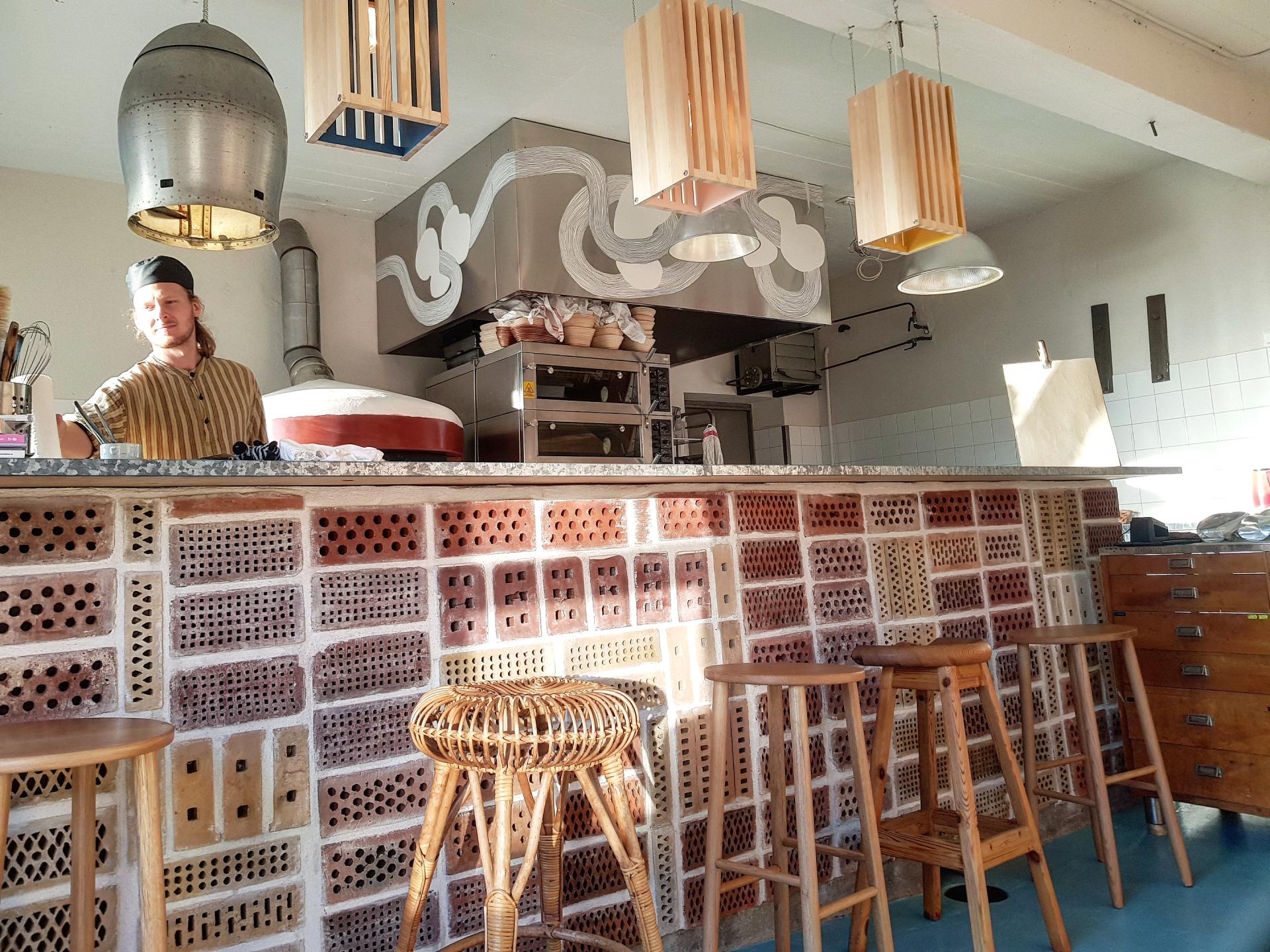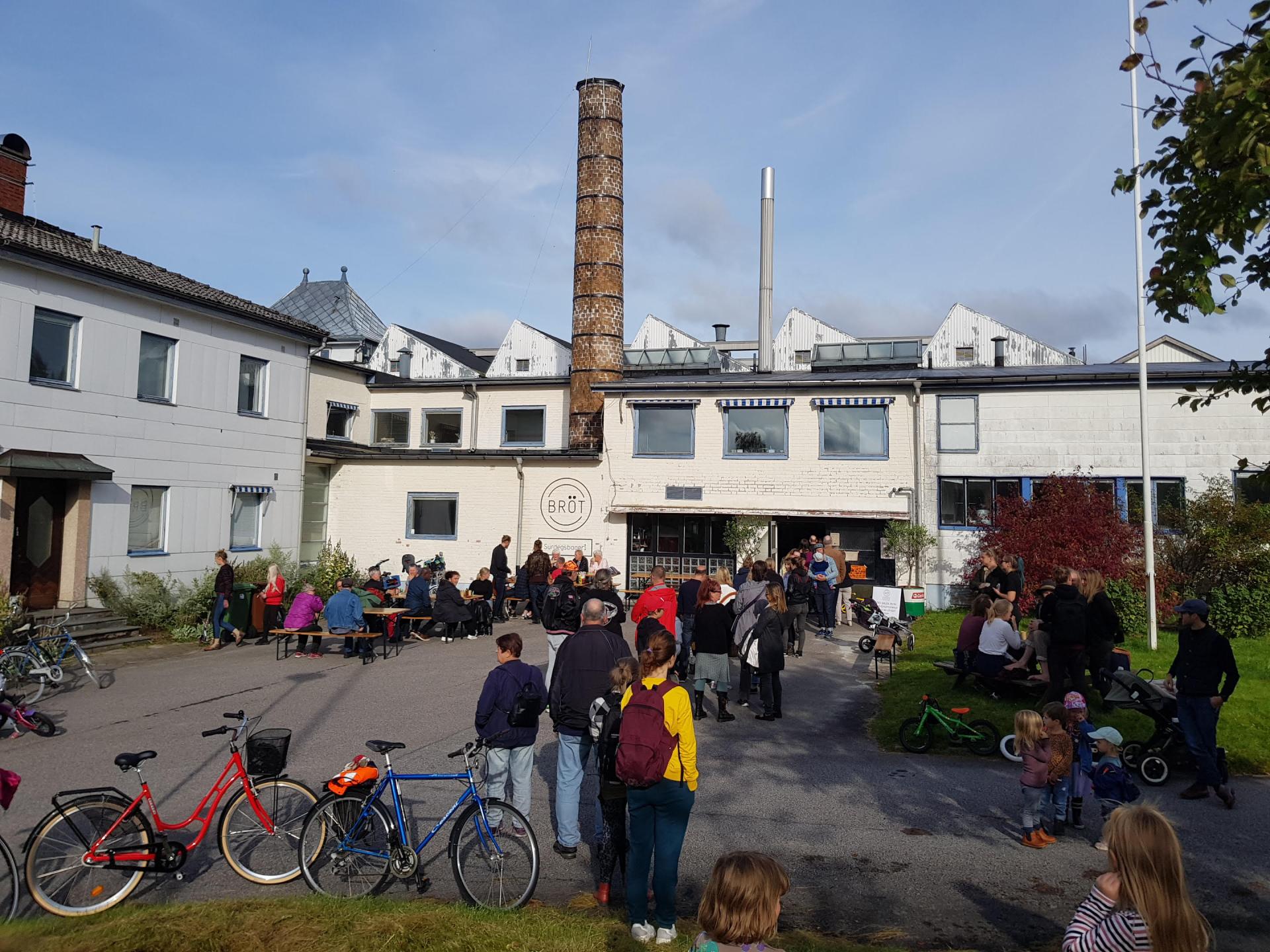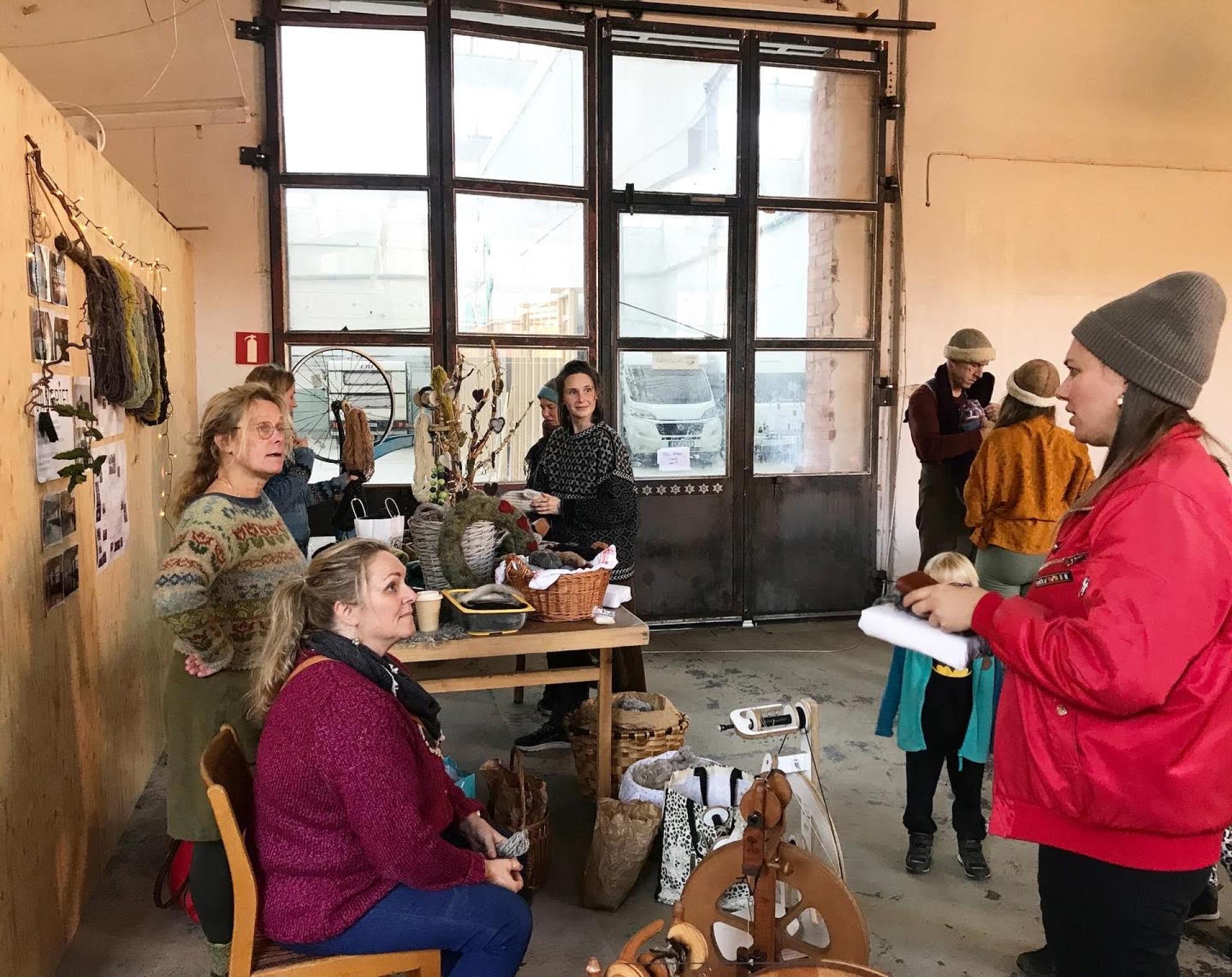Väveriet i Uddebo
Basic information
Project Title
Full project title
Category
Project Description
Väveriet i Uddebo is a mix of actors and activities under the roof of a building that used to be a weaving mill. The property has by new activities regained its meaning for the village's identity and works as a venue for both work and social life. The development is made possible by gentle, step by step and conscious renovation of the building as well as development of the outdoor environment, and all work is made in close collaboration between property owners, local actors and tenants.
Geographical Scope
Project Region
Urban or rural issues
Physical or other transformations
EU Programme or fund
Which funds
Description of the project
Summary
Up until 2012 Väveriet was a weaving mill producing fabric to infrastructure and public arenas all around Sweden and the nordic countries. The factory was an important employer and strongly contributed to the local identity in the village Uddebo and municipality Tranemo. In 2016 Liv Sonntag and Kalle Magnusson purchased the property that, at that point, was empty and without activity and started the transformation into a new type of factory - of ideas, knowledge and place making. The 5000 sqm of the building and its surrounding 20 hectares of field and farmland is now filled up with new activities contributing to local identity, job opportunities and creative ideas to local solutions to global issues.
The first stage in the physical transformation of Väveriet has been performed between 2016 and 2020 which this application covers. The main part in this phase has been:
1. zoning process - a new detailed plan to create preconditions for further long term development
2. investigation and installation of a new sustainable heating system to create preconditions for further long term development
3. strategic small interventions of existing premises to make room for permanent tenants as well as a couple of rooms for events/temporary use and for cultural activities.
4. the planning of a tiny-house village to meet the needs and requests of the village to have a place for self-organized construction and a new kind of housing typology in the village.
5. development the outdoor spaces to improve attractiveness and biological values.
6. opening a bakery and pizzeria to open up the house to the public and create preconditions for events and cultural activities to take place.
The transformation has been done in close collaboration and dialogue with the local community. The interventions in phase one has resulted in a more sustainable, inclusive and beautiful environment as well as a solid foundation and model for Väveriets, and Uddebos, further local development.
Key objectives for sustainability
Reclaim buildings and materials
Väveriet addresses sustainability and circularity firstly by reusing a 5000sqm old factory building that otherwise would have been left abandoned. This in a countryside context where development and investments are rare. The renovations are made step by step. By making the renovations step by step and letting it take time materials and inventory can be fixed and reused instead of replaced. For example each summer some of the old windows are repaired and painted. The slow transformation also allow time to collect useful used products, ie doors, windows and interiors, and there is also space in the factory to store it. Therefore the transformation is to a large extent made out of reused materials.
One of the first investments in the property was to replace the oil heating system with a geothermal system. Today the chimney smoke comes not from burning fossil fuels, but from baking pizzas in the wood fired pizza-oven that was connected to the old chimney as a bakery opened up in 2020. This is of course an improvement for the climate and environment but also serve as an inspiration where a former unsustainable symbol - the factory and chimney- has changed into being one that brings hope for a brighter future.
Land use and food production
Väveriets property also includes about 20 hectares of land. Part of an old soccer field is leased out to the Tiny-house village, and the farmland is leased to a local community garden group and a small scale commercial vegetable farm. The rest is grazed by the villages association-owned sheep, helping to keep the landscape open and contribute to bio-diversity. Väveriet is also hosting a REKO-ring, a local food-market. Food products is thereby both produced, refined and sold on Väveriets premises.
The mix of agriculture around the factory broadens the idea of what a farm is, how it looks and how food can be produced. This can generate ideas and inspiration to other rural places.
Key objectives for aesthetics and quality
Spatial values and cultural environment
The project strives to renew and put the factory in a new context, with the starting point in the existing qualities - the light, volume and space as well as the roughness and honesty in the materiality. The added program and adjustments are done in relation to existing cultural values. Parallell to a site-specific new design of several places in the building, ie the bakery Bröt and event hall Tvinnsalen, the overall character has been dealt with by a decision on some frame element - ie signs and colours. An architect. Moa Rundlöf architect SAR/MSA, has continuously been consulted in the transformation as well as hired for the site-specific design in for instance the bakery.
Outdoor environments
In the outdoor spaces most close to the factory the rooms have been improved by adding trees and planting in a strategic way to improve the landscape design. A lot of old features - signs, fences and posts, are taken away and the added elements, ie the mailboxes are design site specific. The design has strived to bring unity and calmness to balance the motility that is an important overall character of the property. With the same aim an overall structure plan was set together with the landscape architect Sabina Richter and the tiny house association before the group were free to independently design and develop the houses. In the structure plan the overall landscape design with a strong design were set. Each different house, designed and built by its owner, contributes to a versatile, innovative and beautiful whole.
Väveriet, and Uddebo in general, has a strong culture of DIY. People are used to working out problems and solving them together. Väveriet provides an example and experiment in how allowing and encouraging this DIY expression and at the same time have a strong ambition in the overall experience of the designed living environment.
Key objectives for inclusion
Meeting the villages needs
Changing the local plan has been a key to the development of Väveriet. In dialogue with what the villagers wanted and needed from the place, the local plan was changed to include a wide range of activity - from housing, a restaurant, shop, offices, workshops and studios. The change of the local plan has been a foundation to grow gradually and work with the existing environment. Tenant participation has been important in the adaptation and renovation of the spaces they rent.
With the ambition of doing "as small interventions as possible" to meet the need of the (often cultural) actors, Väveriet has in phase one of transformation been focusing on adapting small (less than 150 sqm) rooms to new use. These small rooms are leased to a reasonable rent and a short contract length have been crucial to the local ,often cultural, actors of the village and are now all rented out.
While these permanent tenants provide a foundation for long-term financial stability, participating in events and activities that benefit the village in other ways is another important part of Väveriet. Collaboration with the municipality and organisations for popular adult education has made it possible to host concerts, lectures and courses in crafts. Often inhabitants with certain skills has worked as local resources to help organise the lectures/courses/workshops.
For a symbolic fee local associations such as a ping pong club, an archery-club and a local choir rents spaces in Väveriet. Participation and providing values for the local community is important and therefore the opportunity to sustain affordable premises for activities that are inclusive and benefit the community is prioritised over economic profit.
The hand in hand development of Väveriets physical transformation and the growing local activity are interesting as an example of place making and the role the designed living environment can play and work to encourage local rural development.
Results in relation to category
Identity and belonging
The sense of belonging and ownership of the place has been an important result. Uddebo has become an example of how people have regained their sense of belonging and got empowered to make changes for their own local development. Even the people not actively involved in Väveriet both in the village and in the region consider it an important part of Uddebos new identity as an innovative and progressive hub.
Uddebo is no longer a depopulating and deprived rural area, but is instead seeing many young people moving in, new business starting up, events, art- and cultural projects taking place on a weekly basis. Väveriet is a place of doing things together but with room for ideas and individual creativity.
Visitor base
In combination of the profile and identity Väveriet and Uddebo has, from the local development of the last years, together with an increasing interest in local farming, craft, art and country side in general, slowly become an inspirational place for visitors from the bigger surrounding cities.
New job opportunities
At this first stage of Väveriets transformation several self employed businesses were made possible in the area by affordable rents of land, offices, studios and workshops. Local associations have had a place to meet.
In this first phase, existing rooms with low requirements of investments were in focus. As a result all of those rooms are now rented out and the next stage in the development of the property is ongoing. In the second stage larger investments are needed in the bigger and more raw factory premises. This while maintaining the cultural and local actors that inhabit the house as a result of the phase one transformation.
The successful development in the first stage also made it possible to create 4 part time jobs - 2 in the bakery and 2 directly related to the property development and maintenance. The bakery also employs 2-3 persons hourly and participates in a job-training program.
How Citizens benefit
The owners of the factory are living in the village and are part of the local development in a bigger context. Although the focus in the physical transformation has been the building and its immediate surroundings Väveriet has also been part in developing public interests, needs and places more widely. For instance, Väveriet led the construction of a skateboard ramp in the village open for everyone to use, together with local actors organised a textile festival and built the interactive land art installation "the magical forest".
In some areas, ie investigating and ensuring that the property fulfils the demand of fire safety in its new use, there is less room (and interest) for public involvement. However, in workshops and other shared building activities the civil society has been very much involved. An example of this was the workshop in designing and building of skateboard furniture using recycled materials held together with Mareld Landskapsarkitekter.
This way of cooperating makes Väveriet both a well defined and integrated part of the village.
Physical or other transformations
Innovative character
Property development
This kind of slow step by step property development as part of a place making process and local development is quite different to "normal" property development in the urban context where high property costs leads to demands on high rents and returns. This, in stark contrast to Väveriets case, often leads to fast and heavy exploitation. Väveriet shows that many large rural properties in Sweden, as well as in other parts of the European countryside, has great potential. This kind of property development is a social entrepreneurship rather than a strictly profit driven development. Väveriet also shows how its value can be increased, and how this can be done by using the preconditions in the rural setting where time and space are not scarce resources. The example of Väveriet phase one transformation shows how private for-profit companies can contribute to sustainable development in rural areas and contribute to the local economy, as well as social and ecological sustainability.
Learning transferred to other parties
The project is documented in a number of articles, participation in the book and exhibition “En annan landsbygd” (Angelica Åkerman 2020). The owners as well as a couple of actors in the village and house have frequently held lectures about the local development in Uddebo and the role of the Väveriet.
Väveriet are regularly hosting study visits- for example in collaboration with the Conference for Social Building held in Floda 18-19 november 2021

